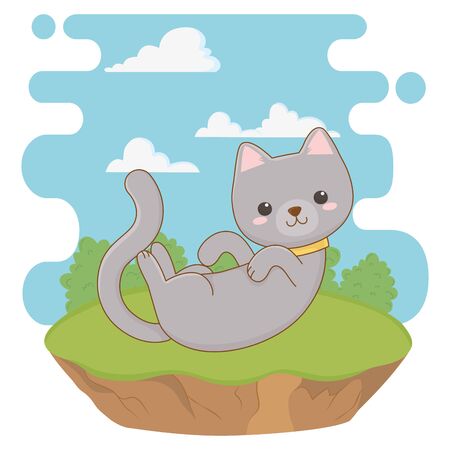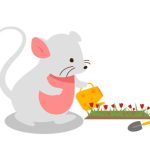1. Understanding Your Cat’s Nutritional Needs
Feeding your cat a well-balanced diet is essential for their overall health and longevity. Cats are obligate carnivores, which means they require specific nutrients that come primarily from animal sources. Understanding these nutritional needs will help ensure your feline friend stays happy and healthy.
Essential Nutrients for Cats
Cats require a variety of essential nutrients to thrive. These include proteins, fats, vitamins, and minerals. Below is an overview of the key nutrients your cat needs:
1. Protein
Protein is the most important nutrient in a cats diet. It provides essential amino acids like taurine, which is crucial for heart and eye health. Animal-based proteins such as chicken, turkey, fish, and beef are the best sources.
2. Fats
Fats provide energy and support cell function, skin health, and a shiny coat. Omega-3 and Omega-6 fatty acids, found in fish oil and poultry fat, are particularly beneficial for cats.
3. Vitamins
Cats need various vitamins to maintain their overall health. Some key vitamins include:
| Vitamin | Function | Sources |
|---|---|---|
| Vitamin A | Supports vision and immune system | Liver, eggs, fish oil |
| B Vitamins | Aids metabolism and nervous system | Poultry, fish, eggs |
| Vitamin D | Essential for bone health | Liver, fish oil |
| Vitamin E | Acts as an antioxidant | Poultry fat, eggs |
4. Minerals
Certain minerals play a crucial role in your cat’s well-being. Here are some important ones:
- Calcium & Phosphorus: Necessary for strong bones and teeth.
- Magnesium: Supports muscle function and nerve transmission.
- Zinc: Helps with immune function and wound healing.
- Iodine: Essential for thyroid function.
The Importance of a Balanced Diet
A balanced diet ensures that your cat receives all the necessary nutrients in the right proportions. Feeding high-quality commercial cat food or a carefully planned homemade diet can help meet these needs.
Avoiding Common Nutritional Deficiencies
Cats have unique dietary requirements that differ from other pets like dogs. They cannot synthesize certain nutrients on their own, making it essential to provide them through food. Some common deficiencies include:
- Taurine Deficiency: Can lead to heart disease and vision problems.
- Arachidonic Acid Deficiency: May cause skin issues and poor immune function.
- B Vitamin Deficiency: Can result in lethargy and neurological problems.
Selecting the Right Food for Your Cat
The best way to ensure your cat gets proper nutrition is by choosing high-quality cat food that meets AAFCO (Association of American Feed Control Officials) standards. Look for foods that list meat as the first ingredient and avoid fillers like corn or soy.
2. Wet Food vs. Dry Food: Pros and Cons
Choosing between wet and dry cat food can be challenging. Each type has its own benefits and drawbacks, and the best choice depends on your cat’s health, lifestyle, and personal preferences. Let’s break down the differences so you can make an informed decision.
Benefits of Wet Cat Food
- Higher Moisture Content: Wet food contains about 70-80% water, which helps keep your cat hydrated and supports kidney health.
- More Palatable: Many cats prefer the taste and texture of wet food, making it a great option for picky eaters.
- Easier to Eat: Soft texture is ideal for kittens, senior cats, or those with dental issues.
- Lower in Carbohydrates: Wet food generally contains fewer carbs, which aligns more closely with a cat’s natural diet.
Drawbacks of Wet Cat Food
- Spoils Quickly: Once opened, wet food needs to be refrigerated and consumed within a day or two.
- More Expensive: Feeding wet food exclusively can be costly compared to dry kibble.
- Messier: Wet food can leave residue in bowls and requires more frequent cleaning.
Benefits of Dry Cat Food
- Convenient and Long-Lasting: Dry kibble has a longer shelf life and doesn’t require refrigeration after opening.
- Easier to Store and Serve: You can leave dry food out for free-feeding without worrying about spoilage.
- Aids Dental Health: Some dry foods are designed to help reduce plaque buildup as cats chew.
- More Affordable: Dry cat food is often more budget-friendly than wet food.
Drawbacks of Dry Cat Food
- Lower Moisture Content: With only about 10% water content, dry food may contribute to dehydration if your cat doesn’t drink enough water.
- Picky Eaters May Refuse It: Some cats find dry kibble less appealing compared to wet food.
- Higher in Carbohydrates: Many dry foods contain more carbs, which may not be ideal for all cats, especially those prone to obesity or diabetes.
Comparison Table: Wet vs. Dry Cat Food
| Wet Food | Dry Food | |
|---|---|---|
| Moisture Content | High (70-80%) | Low (10-12%) |
| Shelf Life | Spoils quickly after opening | Longer shelf life, stays fresh longer |
| Nutritional Benefits | Mimics a natural diet with higher protein and moisture | Tends to have more carbohydrates; some formulas support dental health |
| Taste & Texture | Softer and often more flavorful for picky eaters | Crispy texture that some cats enjoy chewing on |
| Cost | Tends to be more expensive per serving | A more budget-friendly option for daily feeding |
| Lifestyle Fit | Ideal for cats needing extra hydration or with dental issues | Easier for busy owners who prefer free-feeding options |
The Best Choice for Your Cat?
The decision between wet and dry food ultimately depends on your cat’s individual needs. Some pet owners opt for a combination of both—wet food for hydration and flavor, and dry kibble for convenience and affordability. Observing your cat’s health, eating habits, and preferences will help you determine the right balance.
No matter what you choose, always provide fresh water daily to ensure proper hydration, especially if feeding primarily dry food!

3. How Much and How Often to Feed Your Cat
Feeding your cat the right amount of food at the right times is essential for their health and well-being. The ideal portion size and feeding schedule depend on factors such as age, weight, activity level, and overall health. Below, we’ll break down how much and how often you should feed your feline friend.
How Much Should You Feed Your Cat?
The amount of food your cat needs varies based on their life stage and lifestyle. Overfeeding can lead to obesity, while underfeeding may result in malnutrition. Use the table below as a general guideline:
| Cats Weight (lbs) | Daily Calories Needed | Dry Food (cups per day) | Wet Food (oz per day) |
|---|---|---|---|
| 5 lbs | 150-200 | 1/4 – 1/3 cup | 4-6 oz |
| 10 lbs | 200-280 | 1/3 – 1/2 cup | 6-8 oz |
| 15 lbs | 250-350 | 1/2 – 3/4 cup | 8-10 oz |
| 20 lbs | 300-400 | 3/4 – 1 cup | 10-12 oz |
Please note that these are general recommendations. Always check the feeding guidelines on your cat food packaging and consult with your veterinarian for personalized advice.
How Often Should You Feed Your Cat?
Cats thrive on routine, so establishing a consistent feeding schedule is important. Here’s a basic guideline based on different stages of life:
Kittens (Under 6 Months)
- Frequency: 3-4 meals per day
- Description: Kittens need frequent meals to support rapid growth and energy levels.
Young Adults (6 Months – 1 Year)
- Frequency: 2-3 meals per day
- Description: As their metabolism slows down, fewer meals help maintain a healthy weight.
Adult Cats (1-7 Years)
- Frequency: 2 meals per day
- Description: Most adult cats do well with two evenly spaced meals.
Seniors (7+ Years)
- Frequency: 2 meals per day (or more if needed)
- Description: Senior cats may have dietary adjustments based on health conditions; consult your vet for specific recommendations.
The Importance of Portion Control
Avoid free-feeding (leaving food out all day), especially with dry kibble, as it can lead to overeating and weight gain. Instead, measure portions carefully and monitor your cat’s body condition regularly.
Tips for Maintaining a Healthy Feeding Routine
- Create a Schedule: Feed your cat at the same times every day to establish consistency.
- Avoid Overfeeding Treats: Treats should make up no more than 10% of daily caloric intake.
- Mental Stimulation: Consider using puzzle feeders or slow-feed bowls to engage your cat during mealtime.
- Mointor Weight Changes:If you notice sudden weight gain or loss, consult your veterinarian to adjust their diet accordingly.
A well-balanced diet combined with proper portion control will help keep your cat happy and healthy for years to come!
4. Homemade and Raw Diets: Are They Right for Your Cat?
Many cat owners explore homemade and raw diets as an alternative to commercial pet food. While these diets can offer fresh, natural ingredients, they also come with risks if not properly balanced. Understanding the benefits and challenges can help you decide if this feeding method is right for your feline friend.
Pros and Cons of Homemade and Raw Diets
| Pros | Cons |
|---|---|
| Allows full control over ingredients | Risk of nutritional deficiencies |
| Avoids artificial preservatives and fillers | Requires extensive research and preparation |
| May improve digestion and reduce allergies | Higher risk of bacterial contamination (especially with raw diets) |
| Can be customized for specific health needs | More expensive than commercial cat food |
Ensuring Proper Nutrition in Homemade Diets
If you choose to feed your cat a homemade diet, it’s essential to provide all necessary nutrients. Cats require specific vitamins, minerals, and amino acids—such as taurine—to stay healthy. A poorly formulated diet can lead to severe health issues.
Key Nutrients Your Cat Needs:
- Protein: Essential for muscle maintenance; should come from animal sources like chicken, turkey, or fish.
- Taurine: Critical for heart and eye health; found naturally in meat but may need supplementation.
- Fatty Acids: Omega-3 and omega-6 support skin, coat, and brain function.
- Calcium & Phosphorus: Needed for bone health; must be balanced correctly.
- Vitamins & Minerals: B vitamins, vitamin A, and iron are crucial for overall well-being.
Tips for a Safe Raw Diet
If you opt for a raw diet, follow these precautions to minimize risks:
1. Use High-Quality Ingredients
Select human-grade meats from reliable sources to reduce the risk of contamination.
2. Maintain Proper Hygiene
Always wash hands, clean surfaces, and store raw food at appropriate temperatures to prevent bacteria like Salmonella or E. coli.
3. Include Essential Supplements
A raw diet often lacks key nutrients like taurine, calcium, and vitamin E. Consult a veterinarian or pet nutritionist to ensure proper supplementation.
4. Avoid Harmful Foods
Certain foods—like onions, garlic, chocolate, and bones—can be toxic or dangerous for cats. Always verify ingredient safety before feeding.
Consulting a Veterinarian Before Switching Diets
A homemade or raw diet requires careful planning to meet your cat’s unique nutritional needs. Consulting with a veterinarian or feline nutritionist ensures that your cat stays healthy while transitioning to a new feeding routine.
If youre considering this approach, start slowly and monitor your cat’s weight, energy levels, and overall well-being. A well-balanced diet is key to keeping your furry friend happy and thriving!
5. Avoiding Common Feeding Mistakes
Feeding your cat might seem straightforward, but there are several common mistakes that can impact their health. By understanding these pitfalls, you can ensure your feline friend stays happy and healthy.
Overfeeding and Obesity
One of the most common mistakes cat owners make is overfeeding. Many cats are prone to obesity, which can lead to serious health issues such as diabetes, arthritis, and heart disease.
How to Prevent Overfeeding
- Follow the feeding guidelines on your cats food packaging.
- Measure portions instead of free-feeding.
- Monitor your cat’s weight regularly and adjust portions if needed.
- Avoid excessive treats—treats should make up no more than 10% of daily caloric intake.
Improper Food Choices
Cats have specific dietary needs that differ from humans and even dogs. Feeding the wrong type of food can lead to nutritional deficiencies or digestive problems.
Choosing the Right Food
| Food Type | Good or Bad? | Why? |
|---|---|---|
| High-quality commercial cat food | ✅ Good | Formulated with balanced nutrients for feline health. |
| Dog food | ❌ Bad | Lacks essential nutrients like taurine that cats need. |
| Raw meat (without proper handling) | ❌ Bad | Can contain harmful bacteria and parasites. |
| Cooked lean meats (in moderation) | ✅ Good | A good protein source, but should not replace a complete diet. |
| Dairy products | ❌ Bad | Cats are often lactose intolerant and may experience digestive issues. |
Avoiding Harmful Human Foods
Certain human foods are toxic to cats and should never be given as treats or snacks. Some common dangerous foods include:
Toxic Foods for Cats
- Onions and Garlic: Can cause anemia by damaging red blood cells.
- Chocolate and Caffeine: Contain substances that can affect the heart and nervous system.
- Grapes and Raisins: Can cause kidney failure in some cats.
- Xylitol (Artificial Sweetener): Found in sugar-free products and highly toxic to pets.
- Bones and Fatty Scraps: Bones can splinter and cause choking, while fatty scraps may lead to pancreatitis.
The Importance of Fresh Water
Cats often don’t drink enough water, which can contribute to urinary tract problems. Make sure your cat has access to clean, fresh water at all times. Consider using a pet fountain to encourage drinking, as many cats prefer running water.
Avoiding Sudden Diet Changes
If you need to switch your cat’s food, do it gradually over 7–10 days by mixing the new food with the old one in increasing amounts. Sudden changes can cause digestive upset, including vomiting and diarrhea.
Avoiding these common feeding mistakes will help keep your cat healthy and happy. By paying attention to portion sizes, choosing the right foods, avoiding harmful ingredients, and ensuring proper hydration, you can provide your feline friend with the best possible diet.


